How To Sell A Leased Car In Ontario
Getting out of a car lease before it expires can be challenging, but there are several options available to Ontario residents facing this situation. Understanding your choices is crucial if you’re experiencing financial difficulties, need a different vehicle, or simply want to end your lease early. This comprehensive guide will explore the various options to sell a leased car in Ontario and their pros, cons, and potential financial implications.
Read More:
Selling Your Used Car: Maximizing Your Car’s Value in Toronto’s Competitive Market
Expert Tips to Increase Your Used Car Trade-In Value
Selling Your Used Car in Ontario: How To Do It Right
How To Sell A Leased Car In Ontario
Understanding Your Lease Agreement
Before considering any options to terminate your lease early, it’s essential to thoroughly review your lease agreement. Pay close attention to:
- Early termination fees
- Mileage restrictions and associated penalties
- Wear and tear clauses
- Transfer or sublease provisions
Understanding these details will help you make an informed decision about the best course of action when sell a leased car in Ontario. It’s also advisable to consult with a financial advisor or professional to ensure you fully comprehend the terms of your agreement and the potential consequences of early termination.

How To Sell A Leased Car In Ontario
Option 1: Lease Transfer
One of the most cost-effective ways to sell a leased car in Ontario is through a lease transfer or assumption. This process involves finding someone willing to take over your lease for the remaining term.
Pros:
- Minimal financial impact
- Potential to avoid early termination fees
- Opportunity to negotiate with the new lessee
- Maintains a good relationship with the leasing company
Cons:
- Requires effort to find a suitable candidate
- Some lease agreements may restrict transfers
- Potential liability if the new lessee defaults (depending on the agreement)
- This may involve transfer fees
How to Proceed:
- Check your lease agreement for transfer restrictions
- Use online platforms to list your vehicle for lease transfer
- Screen potential candidates carefully, including credit checks
- Work with your leasing company to complete the transfer process
- Consider offering incentives to make your lease more attractive to potential transferees
Option 2: Lease Buyout
If you’ve grown attached to your leased vehicle or believe it has retained significant value, consider a lease buyout. This option allows you to purchase the vehicle outright, potentially ending your lease obligations.
Pros:
- Opportunity to keep the vehicle
- Potential to sell the car for a profit if its market value exceeds the buyout price
- Avoids mileage and wear-and-tear penalties
Cons:
- Requires a substantial upfront payment
- May need to secure financing for the buyout amount
- Potential for negative equity if the car’s value is less than the buyout price
How to Proceed:
- Contact your leasing company for the buyout quote
- Research the current market value of your vehicle using resources like Canadian Black Book or Kelley Blue Book
- Decide whether to keep the car or sell it immediately after buyout
- Arrange financing if necessary, comparing rates from multiple lenders
- Complete the buyout process and transfer ownership
Option 3: Trade-In for a New Lease or Purchase
Some dealerships may allow you to trade in your leased vehicle for a new lease or purchase, rolling any remaining payments into the new agreement. This can be an attractive option if you’re looking to upgrade your vehicle or switch to a different model.
Pros:
- Opportunity to upgrade to a new vehicle
- Potential to negotiate a better deal
- Consolidate your current lease obligations with a new agreement
Cons:
- May result in higher monthly payments on the new agreement
- Could extend your overall financial commitment
- Potential for negative equity to be carried over to the new lease or purchase
How to Proceed:
- Contact your dealership to discuss trade-in options
- Get an appraisal of your current leased vehicle from multiple sources
- Negotiate the terms of the new lease or purchase agreement, including any fees or penalties from the current lease
- Carefully review the new contract before signing, paying attention to the total cost of ownership
Option 4: Sell the Lease to a Third Party
In some cases, you may be able to sell your lease to a third-party company that specializes in assuming leases. This option can provide a quick exit strategy, especially if you’re unable to find an individual to take over your lease.
Pros:
- Potential for a quick exit from the lease
- May avoid early termination fees
- Less personal involvement in finding a new lessee
Cons:
- Might not be available for all lease agreements
- Could result in a financial loss depending on the terms
- May involve fees for the third-party service
How to Proceed:
- Research reputable lease assumption companies operating in Ontario
- Get quotes from multiple providers to compare offers
- Review the terms and conditions carefully, including any fees or charges
- Coordinate with your leasing company to ensure a smooth transfer
- Understand any ongoing obligations or liabilities after the transfer
Option 5: Early Lease Termination
If all other options are exhausted, you may need to consider early termination of your lease. This is often the most expensive option but can provide a clean break from your lease obligations.
Pros:
- Immediate release from lease obligations
- Clear path forward without ongoing commitments
Cons:
- Often the most expensive option
- Potential for significant fees and penalties
- May impact your credit score
- Could affect your ability to lease or finance vehicles in the future
How to Proceed:
- Review your lease agreement for early termination clauses and associated costs
- Contact your leasing company to discuss termination options and get a detailed breakdown of fees
- Prepare for potential fees, including remaining payments, depreciation costs, and early termination penalties
- Consider negotiating with the leasing company for more favourable terms or a payment plan for termination fees
- Explore the possibility of deferring payments or temporarily suspending the lease if facing short-term financial difficulties
How to Minimize Financial Impact When Selling Your Leased Car in Ontario
Regardless of the option you choose, there are strategies to minimize the financial impact of ending your lease early:
Timing is key: Try to exit your lease as close to the end of the term as possible to reduce penalties and fees. Always attempt to negotiate fees and terms with your leasing company. They may be willing to work with you to find a mutually beneficial solution.
Explore all options: Don’t settle on the first solution; compare the costs and benefits of each approach thoroughly. If allowed by your lease agreement, subletting your vehicle for a portion of the remaining term can offset costs. But make sure you understand the legal and insurance implications of this option.
Mileage management: If possible, reduce your driving to stay within mileage limits and avoid overage charges. Always keep the vehicle well-maintained to avoid additional charges for excessive wear and tear.
Seek professional advice: Consult with a financial advisor or automotive lease specialist to explore all available options and their long-term implications.
It’s also important to note that some methods of ending a lease early can impact your credit score. Late payments, defaulting on the lease, or early termination can all potentially lower your credit score. However, successfully transferring a lease or completing a buyout typically has minimal impact on your credit, provided all payments are made on time.
Sell a leased car in Ontario requires careful consideration of your options and their financial implications. By understanding your lease agreement, exploring various exit strategies, and perhaps negotiating with your leasing company, you can find the most cost-effective solution for your situation. Remember to weigh the pros and cons of each option and consider seeking advice from a financial professional to make the best decision for your situation.
Whether you choose to transfer your lease, buy out the car, trade it in, sell to a third party, or terminate the lease early, being well-informed and proactive can help minimize the financial impact and stress of ending your lease before its term. Always communicate openly with your leasing company and explore all available options before making a final decision. With careful planning and negotiation, you can navigate the process of ending your car lease early while protecting your financial interests and maintaining a positive relationship with leasing companies for future transactions.
For more information on how to sell a leased car in Ontario, visit YST Auto Sales.
For a hassle-free experience, consider YST Auto Sales, your trusted used car dealer. Selling or trading in a used car in Ontario with YST Auto Sales is quick and easy. Simply visit our Sell Your Car page and enter your car’s details to get an instant cash offer within minutes.
Unlike selling privately through online marketplaces, YST Auto Sales eliminates listing fees and time-wasting negotiations and skips the hassle of meeting buyers. You will receive a transparent cash offer upfront. YST Auto Sales offers pick-up right at your door or a convenient drop-off location.
If you’re looking to upgrade, use your old car as a trade-in for a new one from our extensive selection. YST Auto Sales will even handle the simultaneous pick-up and drop-off for both vehicles. This also saves your valuable time and saves more on your new car—a win-win!

